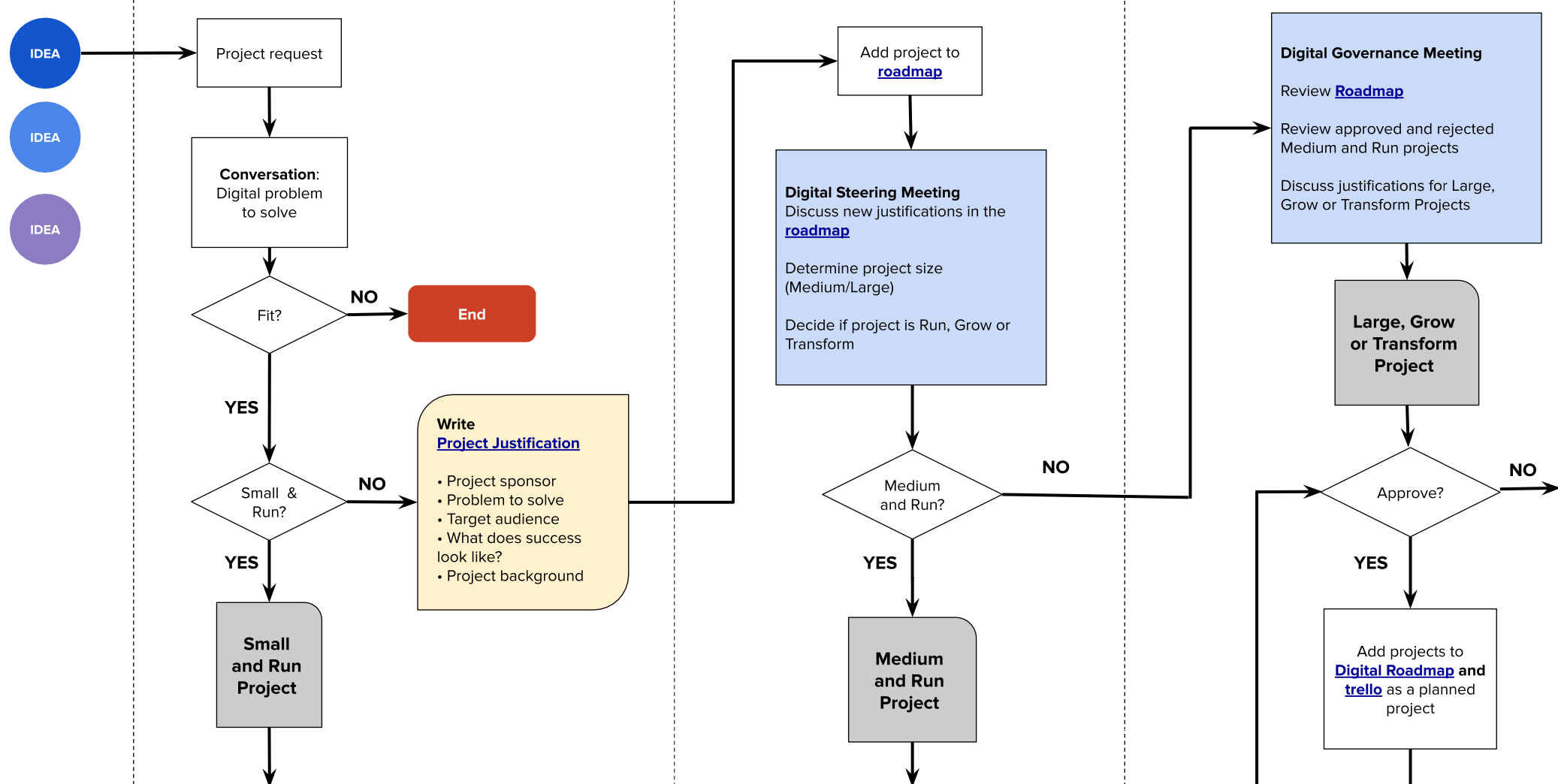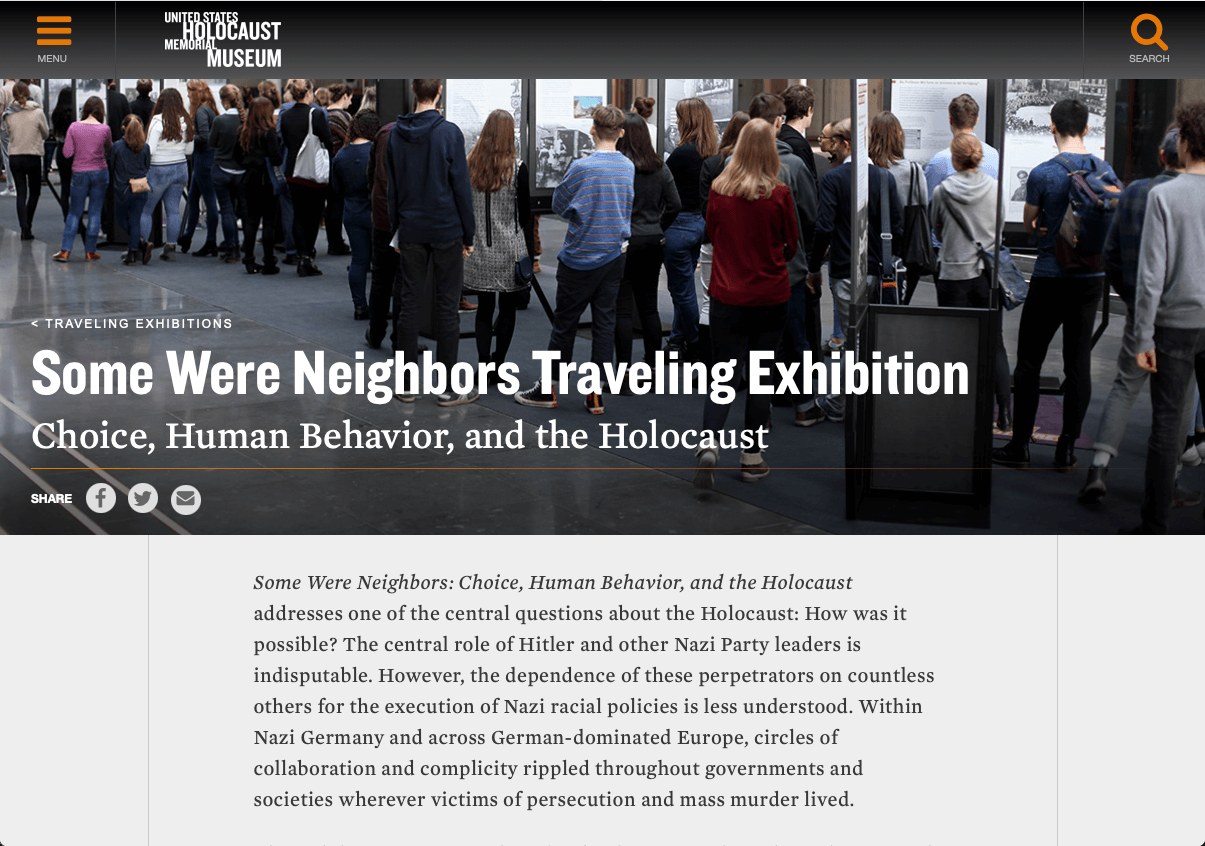United States Holocaust Memorial Museum work highlights
As a design manager at the United States Holocaust Memorial Museum, I supervised a small team with a broad skill set that included: exhibit designers that were responsible for the planning, design, and maintenance of physical exhibits; user experience designers that were responsible for the design and maintenance of digital exhibits and products; and developers that were responsible for full stack development of museum exhibits and products.
In this role, I focused on creating a supportive environment where my team and colleagues could do their best work, and partnered with museum leadership and product owners at the museum to define digital strategy and design priorities.
Team management and operations

Bringing greater visibility to work in progress
When I started in my role, I interviewed my team to ask them about current issues and concerns. An issue that came up again and again was that designers were spread thin across too many projects without a clear understanding of goals and project priorities. A major focus on in my first year on the job was to bring greater visibility at an organizational level to all work in progress, and put transparent structures in place to communicate project priorities.
To bring greater visibility to work in progress at an organizational level, I hosted a meeting twice a month that included representatives from design, marketing, IT, and collections. In the meeting we reviewed a kanban-style project board that I introduced, which tracked digital work in progress across projects. One issue the project board exposed early on was that there were untracked support requests my team was working on alongside new product development.
By bringing visibility to the significant amount of maintenance work that was happening, I built support for identifying maintenance teams for products, which then made it possible for us to account for maintenance work in product roadmap and capacity planning.
Concurrently supporting product development and maintenance
To address further issues with the timelines for new projects, I introduced a clearer separation between identifying the goals for a project, and the plan for how the project should be completed. When I started, digital project goals and timelines were grouped in the project approval process. This led to unrealistic deadlines that were based on limited information. The project approval process that I introduced to the museum’s digital steering group asked the group to first consider the problems a project is trying to solve and if the project aligns with our strategic priorities. If a project had been identified as a priority, design and technical leads close to the work were consulted in the planning of the project before the work would begin.
My leadership led to improved capacity planning for current and future projects, provided better understanding of project goals and outcomes, reduced friction on project teams, and improved the work environment.
Product management and exhibit design
Beyond the work of managing the design team, the museum looked to me for expertise in product design, and building a product management culture. Translating best practices from digital product design, I partnered with leadership at the museum to create roadmaps and establish of measurable, user-centered goals for digital learning tools and exhibits.
Listed below are some of the projects I worked on with my team during my time at the museum.
The United States Holocaust Memorial Museum website
The museum’s main website received 19.8 million unique visitors from more than 238 countries and territories in 2019. Working closely with stakeholders throughout the museum, I worked with my team to optimize the content and design of each section of the site.
Experiencing History
Experiencing History is a primary source teaching tool that is regularly updated with new sources and teaching material. My team worked with the product owner to conduct usability and comprehension testing when new collections were added to the site.
Museum exhibitions
I worked with my team on the planning and design of physical and digital museum exhibitions including updates to the museum’s permanent exhibition and Burma’s Path to Genocide, a special exhibition about the Rohingya people.
Traveling exhibitions
I managed design activities for international educational initiatives including the Some Were Neighbors traveling exhibition. The 22-poster exhibition, which made its debut at the German Parliament, was translated and adapted for nine languages.



